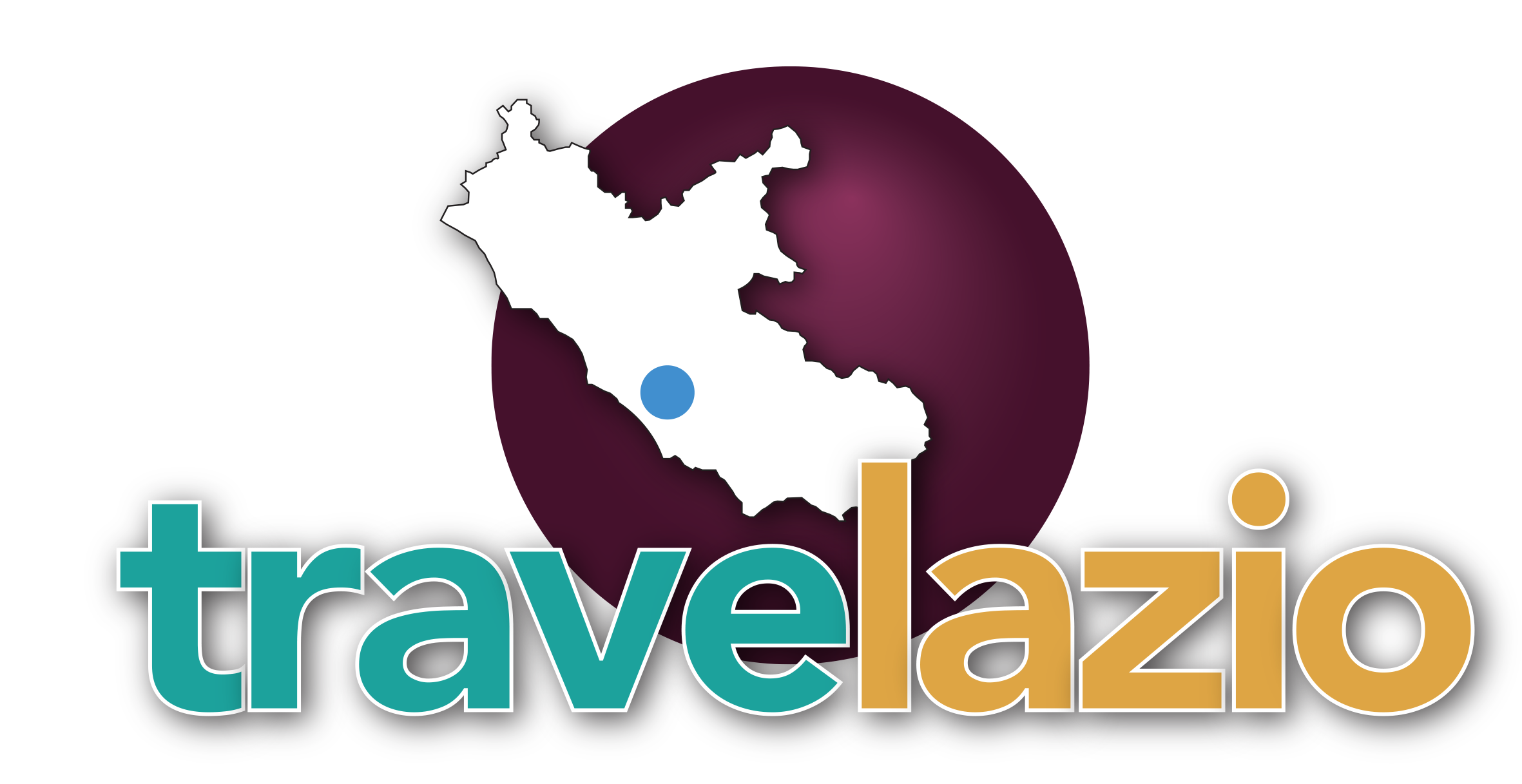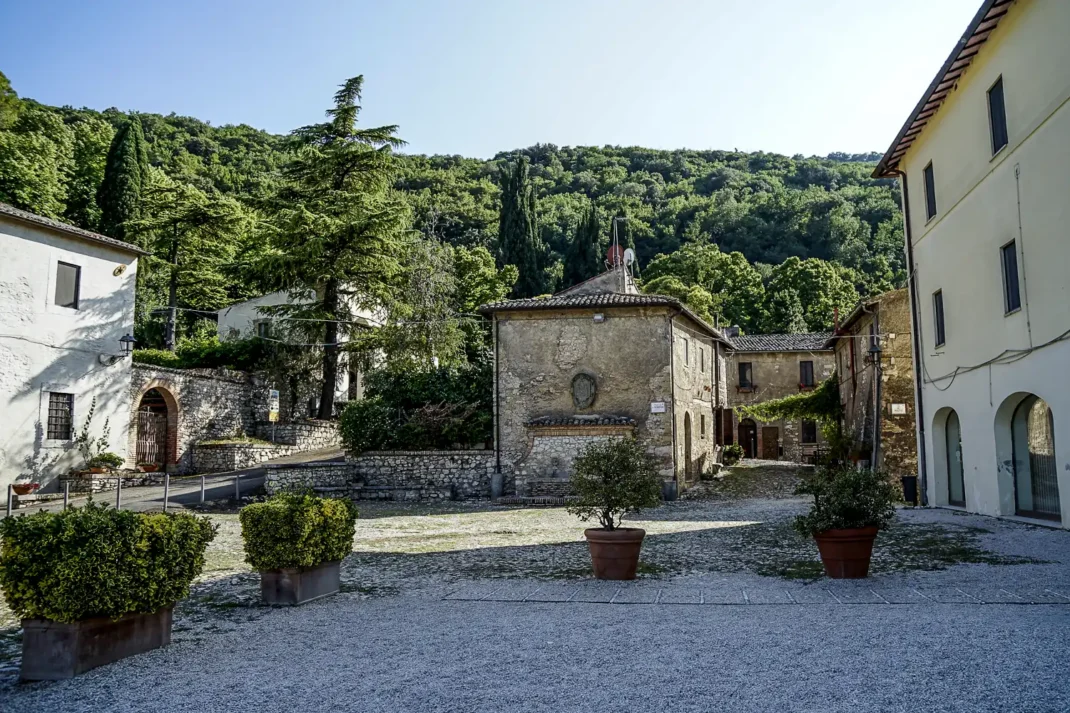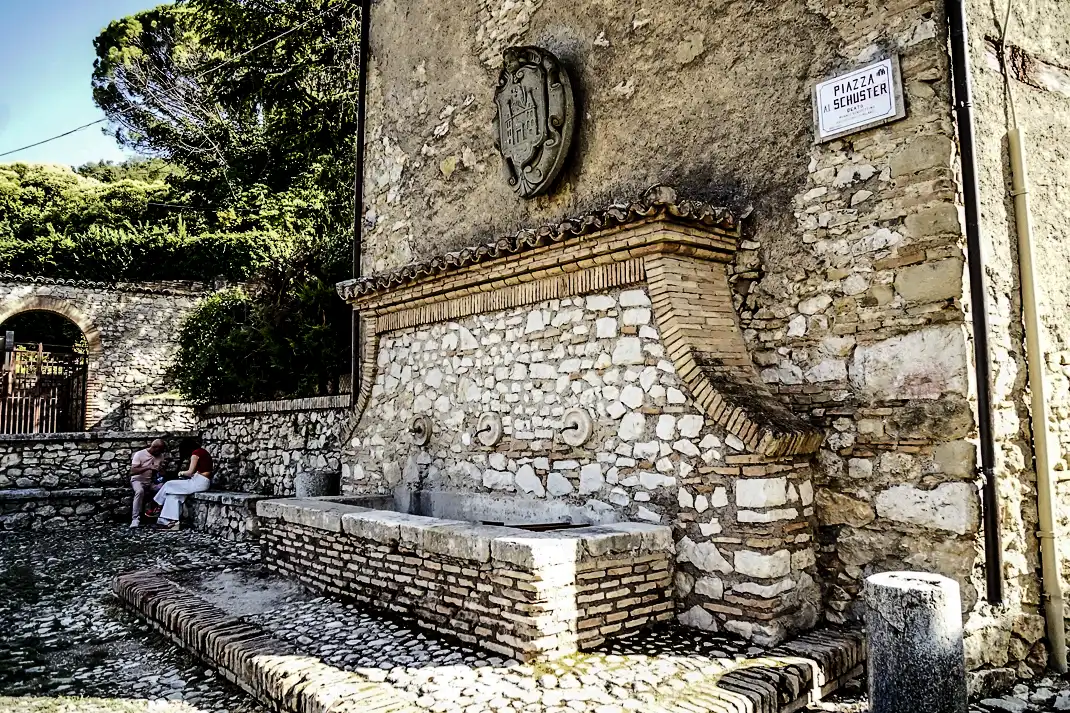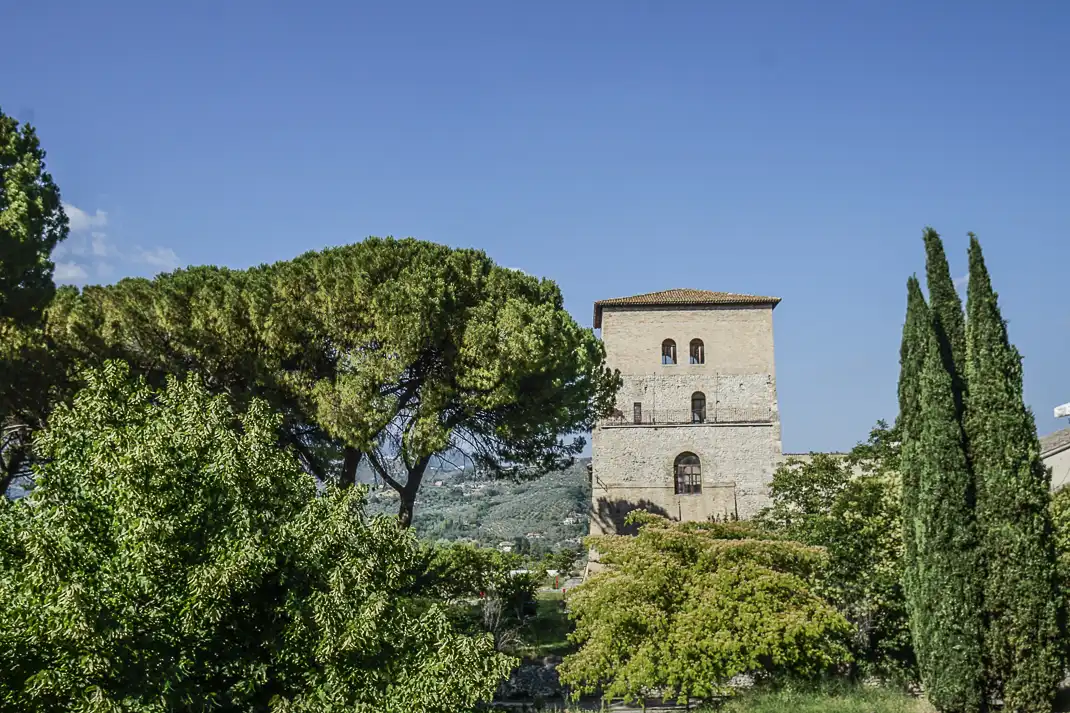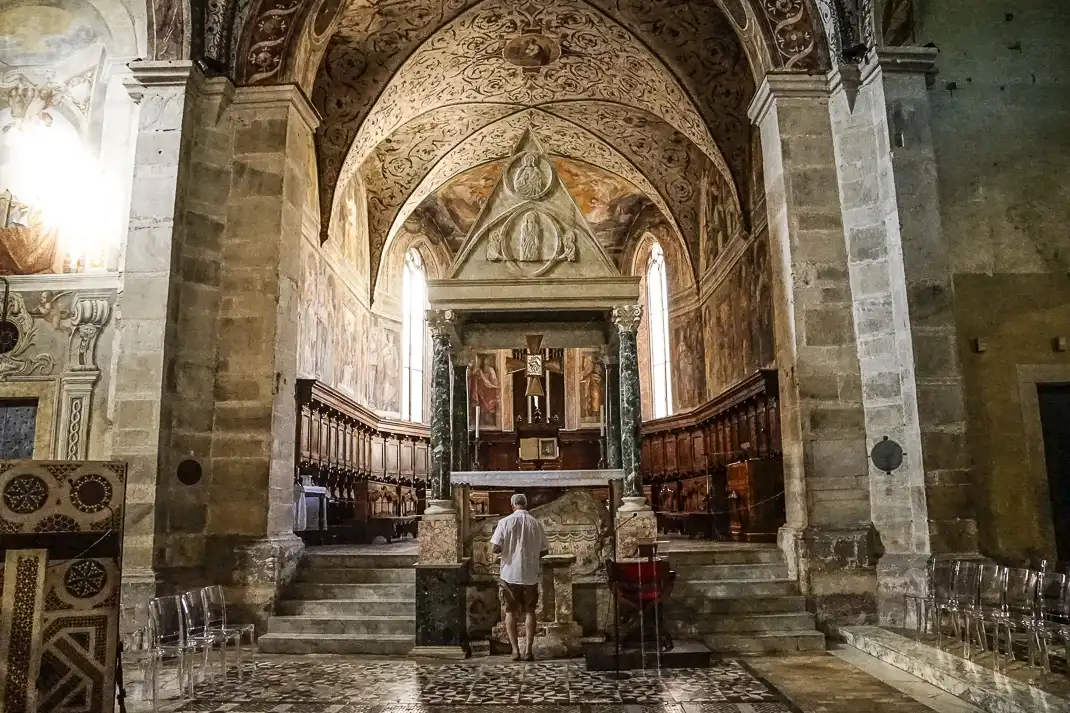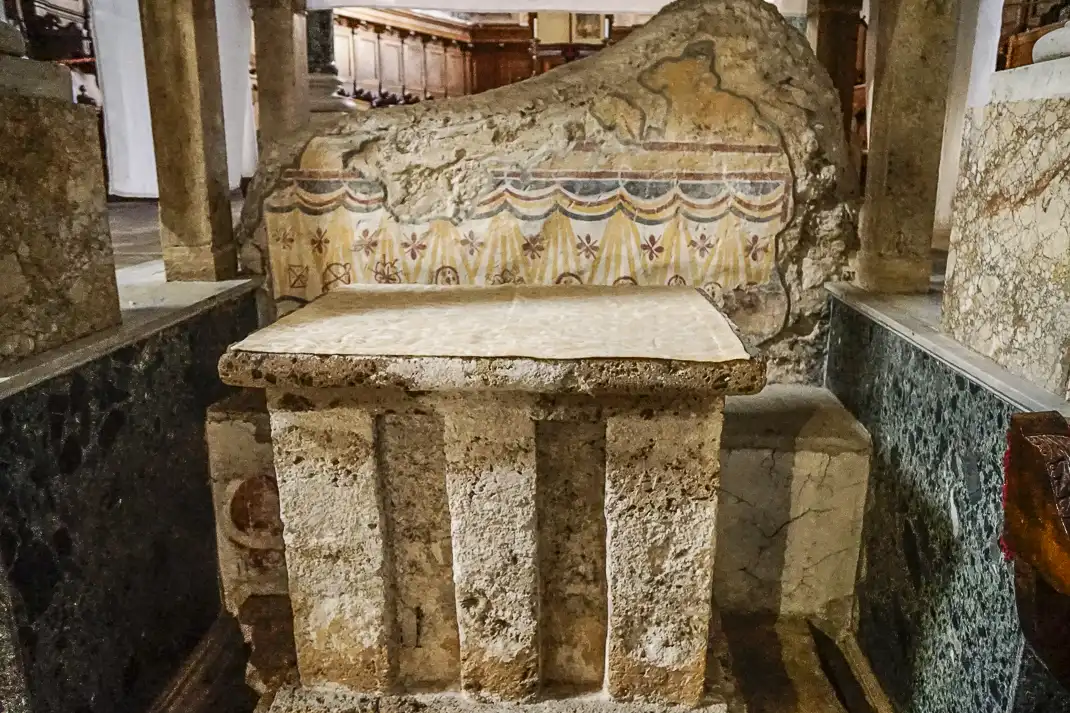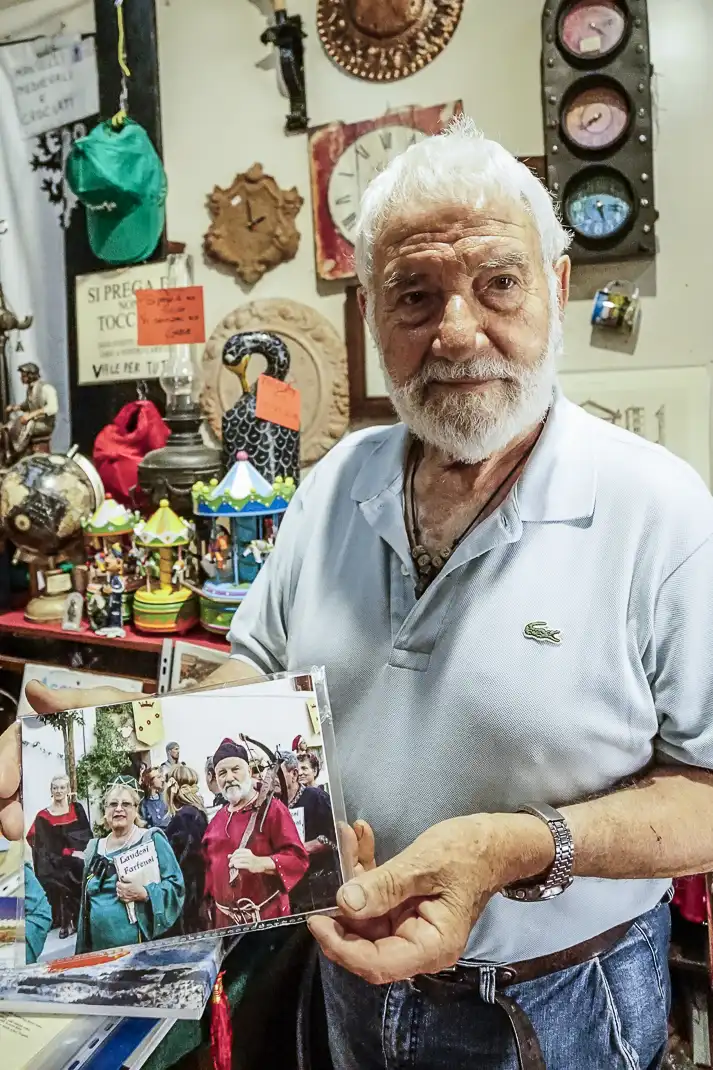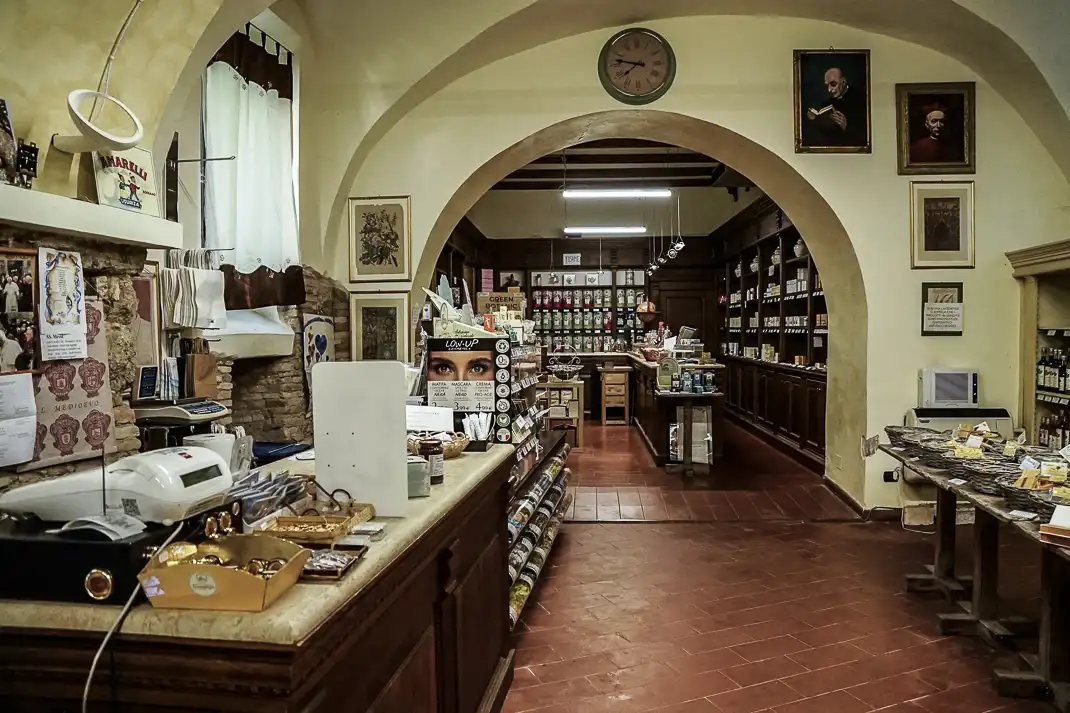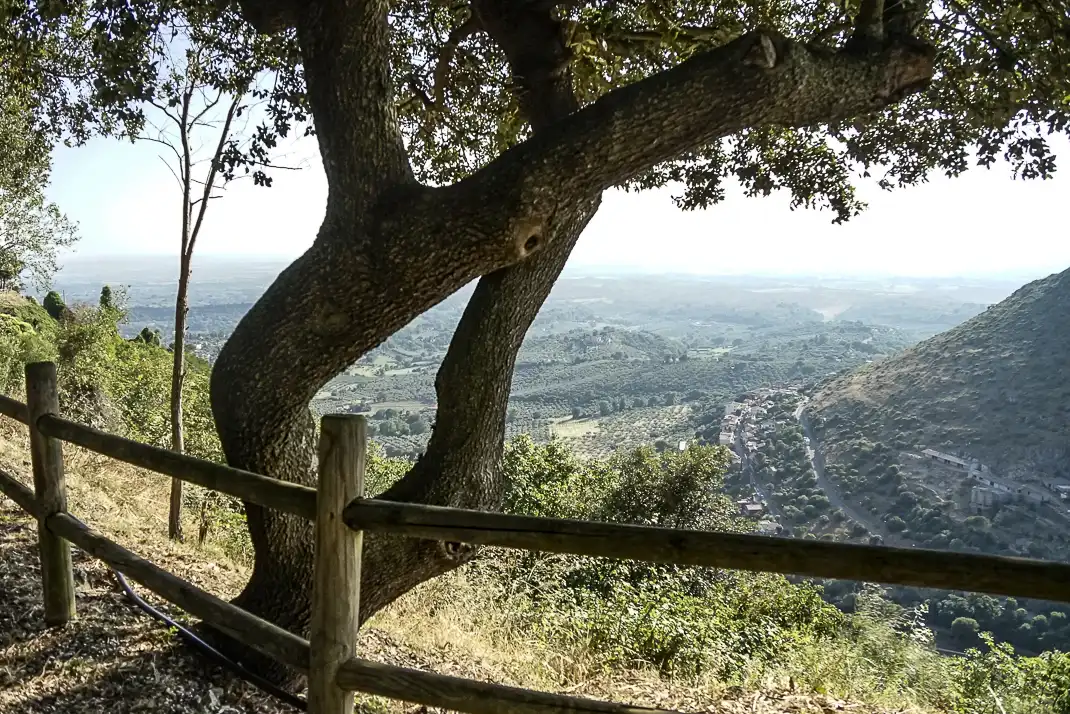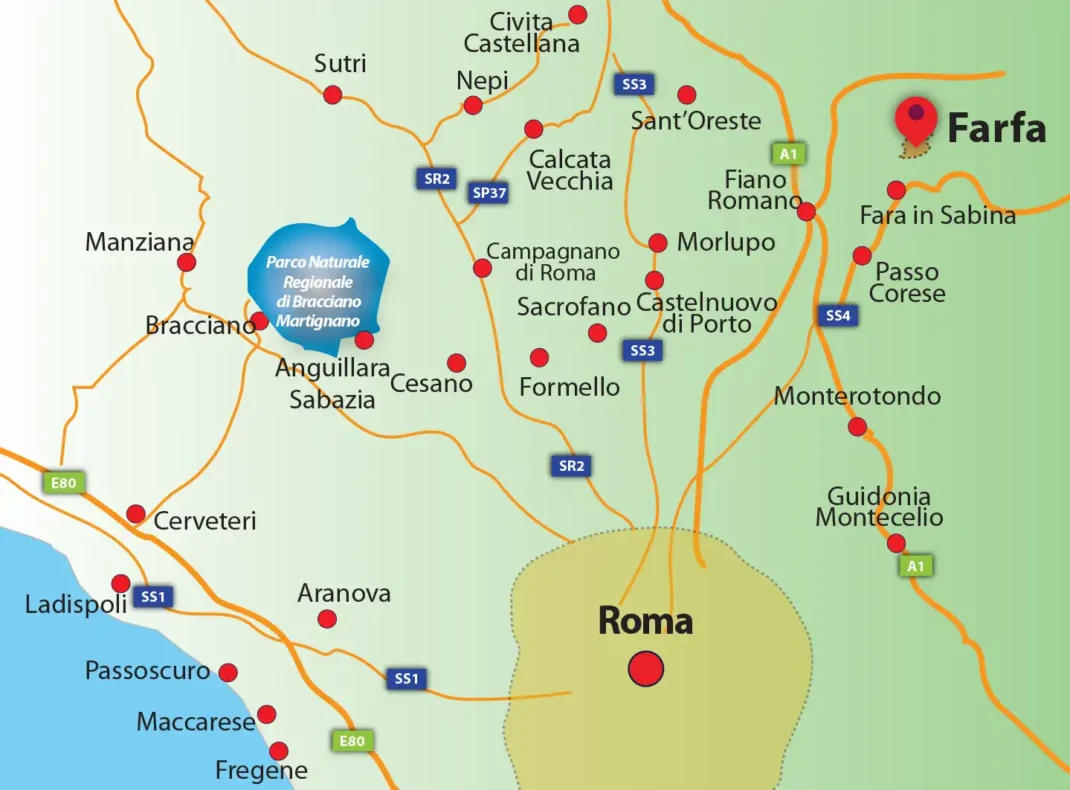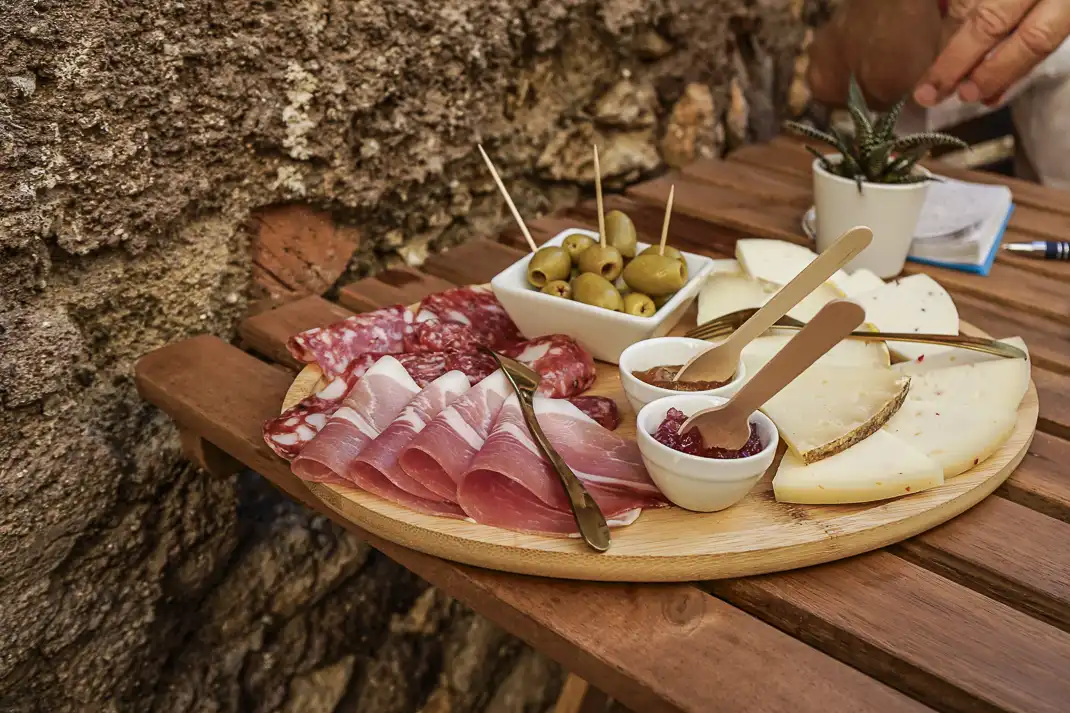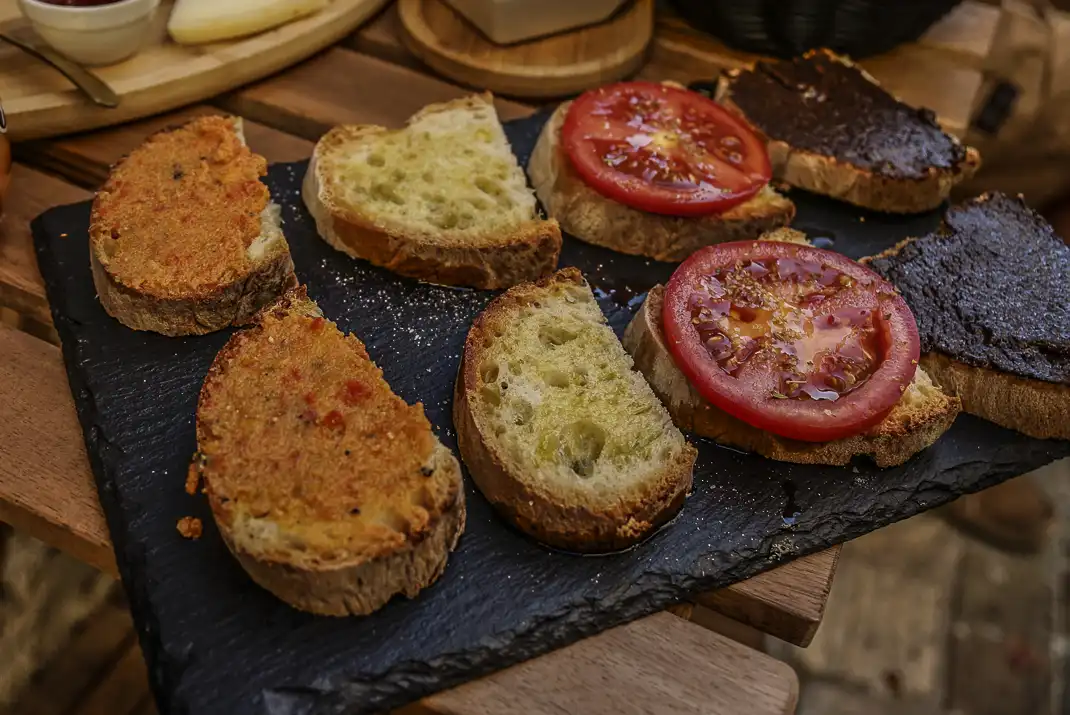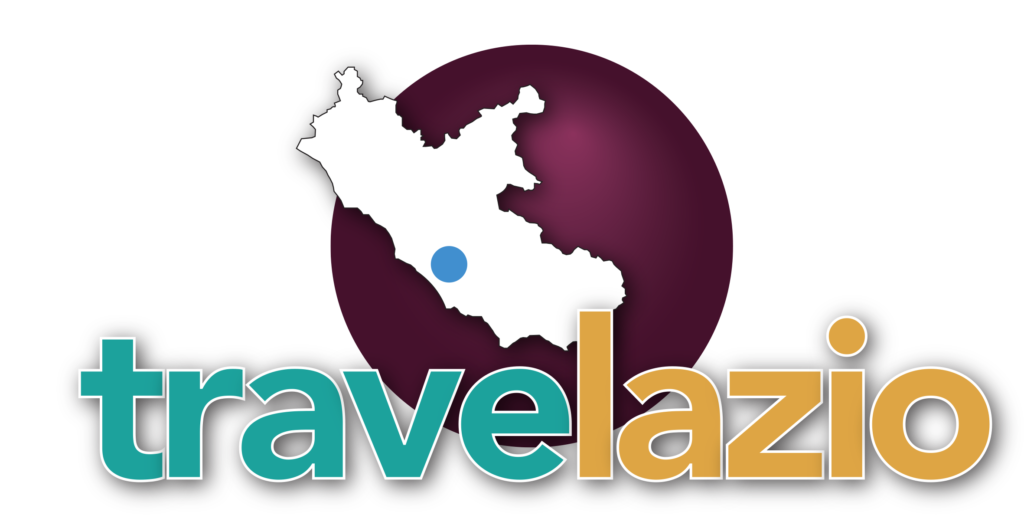
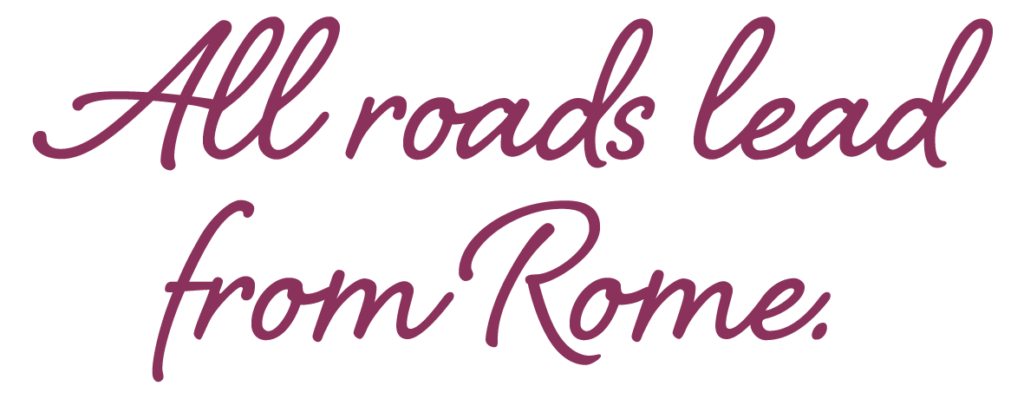
Farfa: A community built around a 15th century church
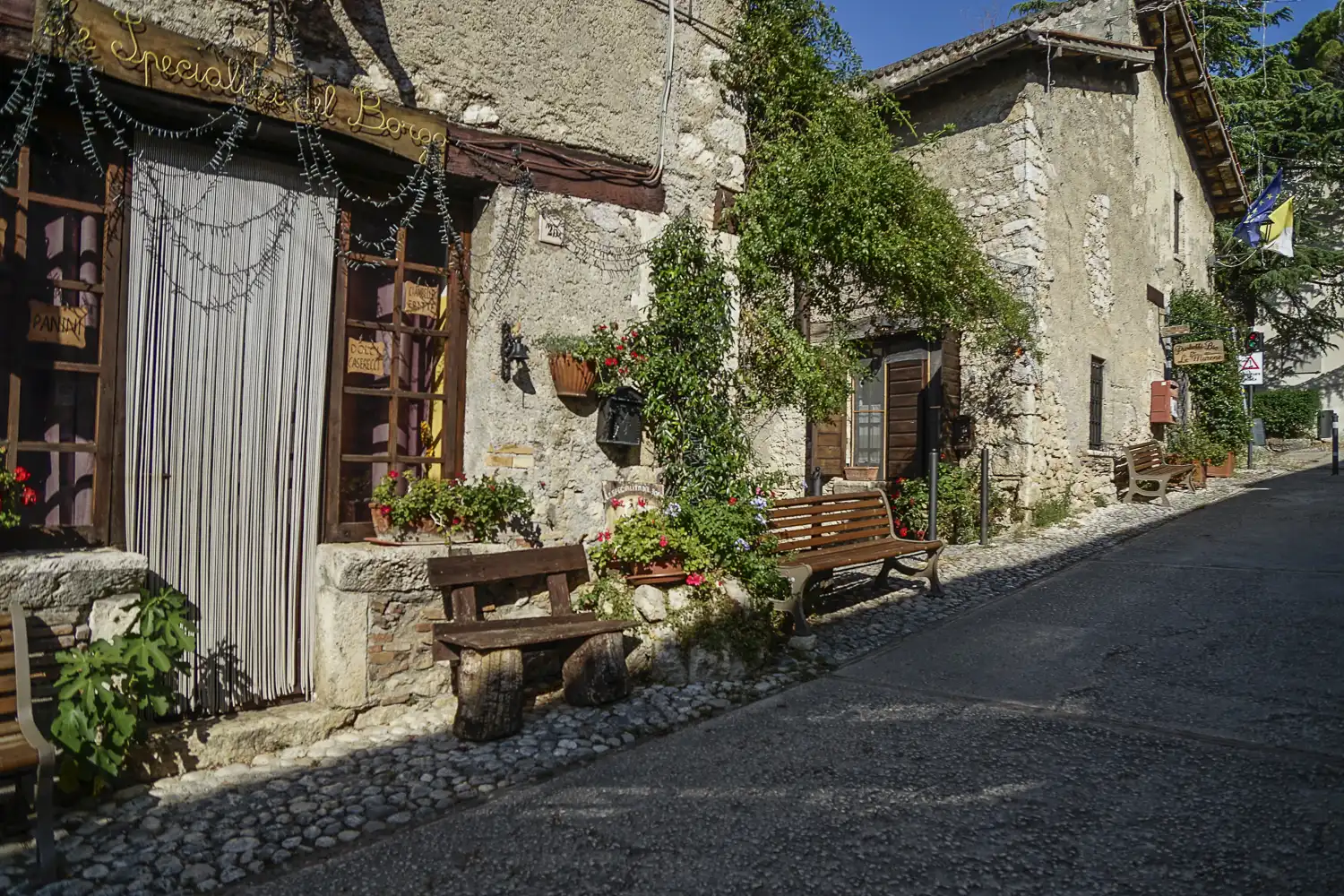
Nearly every town in Lazio has a church dating back hundreds of years. The church is usually folded into the city and becomes part of the landscape. Farfa, in the Sabina Hills 30 miles (53 kilometers) northeast of Rome, is the first community I’ve ever seen built entirely around the church. Farfa’s Benedictine Abbey of Santa Maria di Farfa was built in the 15th century and dominates the area like a skyscraper over a farm.
Farfa is noted for its local shopping and two narrow, cobblestone streets where you can buy everything from a suit of armor to local wine. This is a historical area. The Knights Templar came through Italy in the 12th century and today Farfa is on the San Francesco pilgrimage from Florence to Rome. Farfa has a population of only 50 people but is 2.5 kilometers from the town of which it is incorporated: Fara in Sabina, population 13,900.
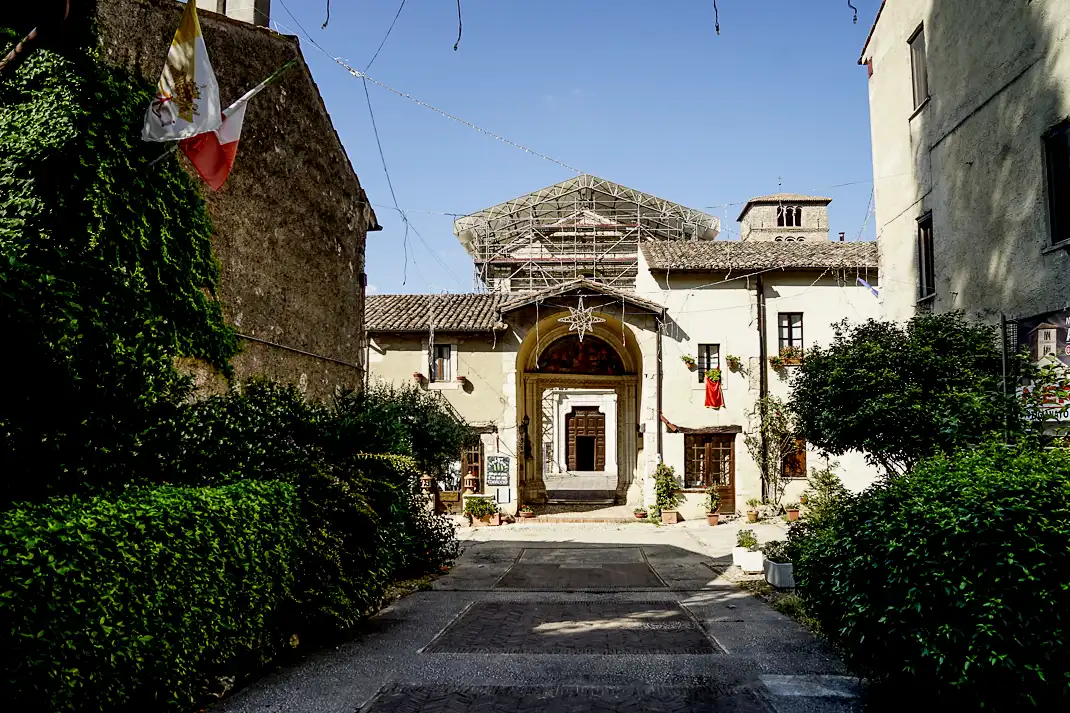
Things to do
1 • Abbey of Santa Maria di Farfa. The beautiful yellow brick makes it shine even more in its Lilliputian surroundings. Unfortunately, when we visited Wednesday, it was totally under reconstruction. Scaffolding covered the facade. Inside, white 10-foot-high cloths separated the central aisle from the right and left sides of the church.
The refurbishing won’t be completed until next year. However, you can still enter and see beautiful frescoes decorate the wall behind the altar which features a sarcophagus, probably pagan or early Christian.
The abbey actually dates back to its founding between 560-570. St. Thomas of Moriana rebuilt it in the 7th century after the Lombards destroyed it. The abbey became powerful in the 8th century and was rebuilt in the 10th century. The powerful Orsini family built the current church in 1494 and in the 1920s it began accepting monks from the Cassinese Benedictine congregation. In 1928 it became a national monument and used as a Holy Door during the 2000 Rome Jubilee.
Info: Via del Monastero 1, 39-07-65-277-065, https://www.abbaziadifarfa.it,
turismo@abbaziadifarfa.it,
10 a.m.-1 p.m., 3-5 p.m. Tuesday-Sunday.
Guided tours available.
2 • Shopping. Via del Monastero, where the abbey is located, and Via di Porta Montopoli, are short, narrow, cobblestone streets running parallel to each other, separated by about 20 meters. They are lined with interesting shops and stores. I Tre Cipressi (The Three Cypresses) next to the church is packed with curios from the Middle Ages.
Weapons. Mini porcelain gnomes. And, yes, a coat of arms. I picked up a knife, modeled after those carried by the Knights Templar, for my knife collection on my wall. You can also find a bronze jewelry shop. Specialità del Borgo has handmade ciambelle fritte pastry.
At the side of the abbey is Bottega Monastica which sells everything from soaps and liqueurs made by resident monks. They are beautiful streets, lined with pink and purple flowers and flower pots. Sit in the abbey’s courtyard under four huge plane trees, have a cold drink from Latarenna del Monaco bar and pet the lazy cats sleeping on the tables.
Just don’t go on a Wednesday. Everything was closed, including the three or four restaurants.
3 • Views. Like picnics? Gather some artisan meats, cheeses and breads in Farfa and drive the 2.5 kilometers to Fara in Sabina.
The walled city is flanked by a steep road skirting the outside of the town. All along the way are spectacular views of the countryside and green mountains beyond. Picnic tables and benches offer perfect vantage points. Dominating the view is Monte Aduziano, a big green hill with a single structure atop it.
The Basilica of Santa Maria Nova was built in the 11th century using the Abbey of Farfa as a model. The top can be reached by a well-marked, easy path starting in Quattroventi. On top you can enjoy the panoramic view of the Farfa Valley – or you can venture past Fara’s wall and eat at one of the charming outdoor trattorias.
Medieval Farfa and the Knights Templar
While the Abbey of Santa Maria di Farfa flourished in medieval times, the Knights Templar roamed Italy while trying to reclaim holy land from the Muslims elsewhere in Europe. The Knights and abbey have no direct connection. The Knights had more influence in Tuscany, Umbria and Puglia. But the abbey’s location to Rome made the Knights’ actions even more important. The Knights, a monastic military order, were founded in Jerusalem in the 12th century after the Crusades began in the 11th century.
That’s when Christians and Muslims fought for 200 years. During that time, the Knights built mansions along pilgrimage routes such as the Francigena. They often gave housing to pilgrims traveling the routes. Farfa is along the Francesco route from Florence to Rome. The Knights lasted until 1312 when Pope Clement V ended the order.
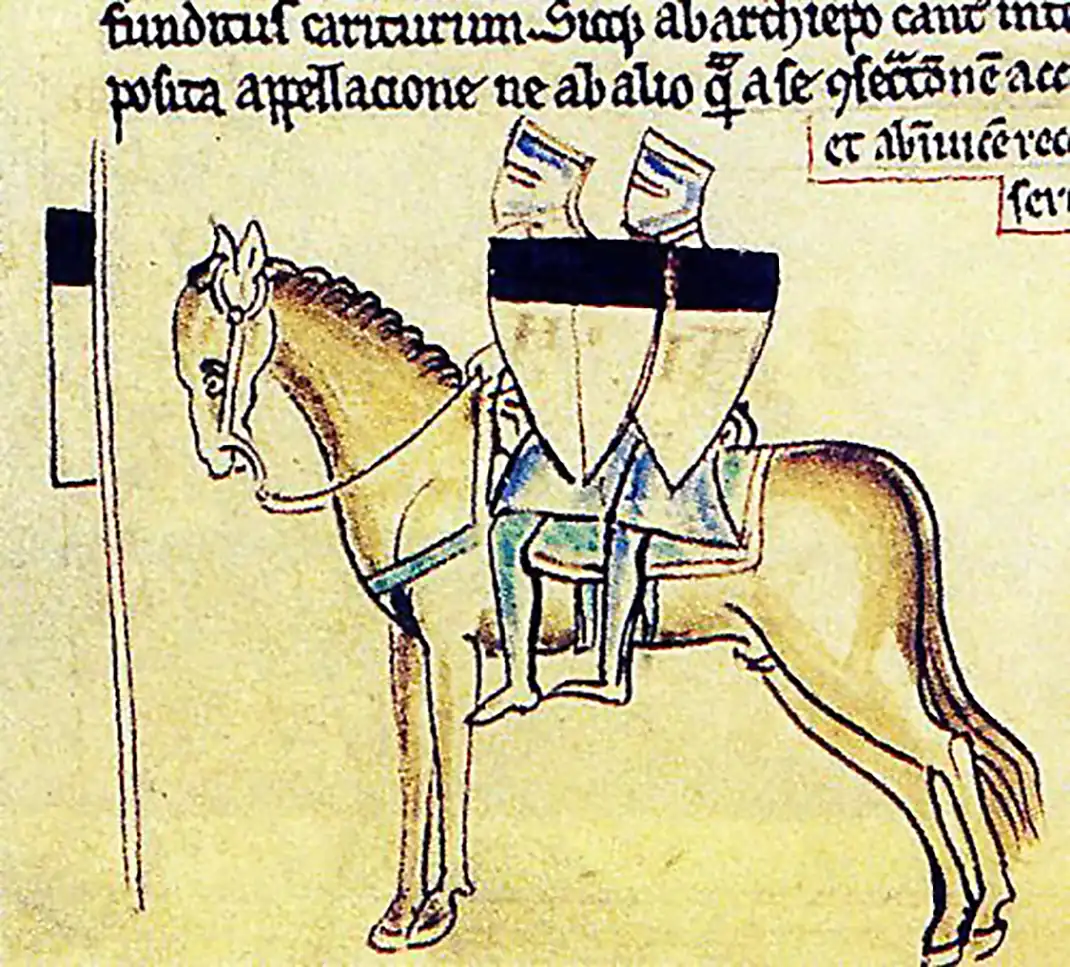
Where is it:
30 miles (53 kilometers) northeast of Rome
How to get there: Drive. Buses leave Rome’s Tiburtina Station and take 90 minutes to reach Fara in Sabina, with a change in Fiano Romano, but it takes you to Fara in Sabina.
You still must make the 2.5-kilometer trip to Farfa.
For more information:
Ufficio Turistico Comune, Piazza Duomo 2, 39-07-6-277-321,
https://www.visitfarainsabina.it,
visitfarainsabina@gmail.com,
10 a.m.-6 p.m. Thursday-Sunday.
Where to eat:
Far Vino, Via del Popolo 40 – Fara Sabina, 39-331-584-5429.
A tiny enoteca at the corner of two narrow cobblestone streets.
Offers good wines at good prices and an excellent cold cut dish of local meats, cheeses and olives for €15 and mixed bruschetta for €10.
Dine at small tables outside and watch rural Italy walk by.
